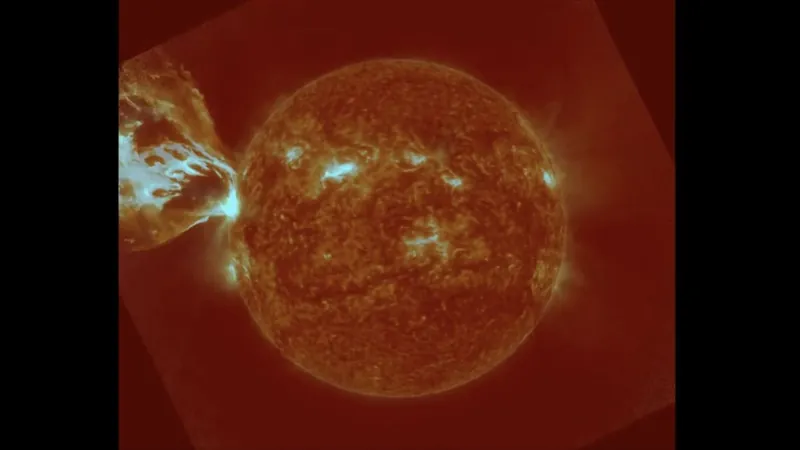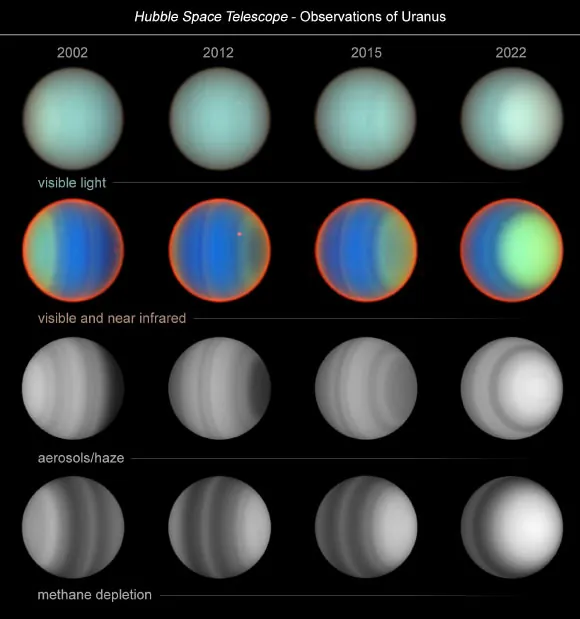
Massive X-Class Solar Flare Erupts from the Sun, Disrupting Communications Across Two Continents!
2025-03-31
Author: Jia
Overview of the Solar Flare Incident
On March 28, 2025, an awe-inspiring and powerful X-class solar flare erupted from the sun's surface, showcasing the dynamic nature of our closest star. Captured by the GOES-16 satellite, a collaborative effort between NASA and the National Oceanic and Atmospheric Administration (NOAA), this monumental event occurred at approximately 11:20 a.m. EST and sparked a significant radio blackout across North and South America as well as the Atlantic Ocean.
Details of the Flare
The X1.1-class flare originated from a sunspot designated AR4046. This marks the first recorded X-class flare in nearly two months, amplifying concerns about solar activity as it coincides with a period when solar flares are generally expected to be more frequent. NOAA’s Space Weather Prediction Center confirmed the flare's intensity, noting that it reached a level categorized as "strong" (R3) and emerged from a newly visible solar region.
What Are Solar Flares?
Solar flares, especially those of the X-class variety, are intense bursts of electromagnetic radiation and highly charged particles. They occur when magnetic fields around sunspots become unstable and release energy. The strength of these flares is categorized on a scale from A to X, with X-class flares being the most powerful and capable of causing significant disruptions to technology on Earth.
Impact on Communications
This particular flare resulted in a temporary radio blackout impacting high-frequency (HF) communications. Since the radiation from the flare directly struck Earth, it ionized the upper atmosphere, specifically the ionosphere, disrupting the propagation of radio signals. NOAA reported that users in the affected regions experienced notable signal degradation or complete loss of contact, a situation that lasted from several minutes to a couple of hours.
Coronal Mass Ejection (CME)
Adding to the drama of the event was the accompanying coronal mass ejection (CME) that followed the flare. CMEs consist of massive clouds of solar plasma and magnetic fields released into space, and they pose risks to satellites and power grids when directed toward Earth. Fortunately, initial forecasts indicated that this CME was not headed for our planet, easing fears of geomagnetic storms and associated disruptions.
Looking Ahead
Looking ahead, however, sunspot AR4046 is rotating into a position where subsequent flares or active solar behavior could be directed towards Earth in the coming days. Solar astrophysicist Ryan French warned of the potential for further strong activity, emphasizing the need for vigilance as the sun continues its unpredictable behavior.
Future Solar Activity
This recent solar event has reignited discussions about our sun's cycles and the potential for catastrophic solar flares. Experts continue to research the sun's activity patterns, with some studies suggesting we might be approaching a period where super flares, far more powerful than the recent eruption, could occur. With the sun facing Earth, now is the time for scientists and tech users alike to prepare for potential impacts from future solar eruptions.
Conclusion
In the wide cosmic dance between our planet and the sun, moments like these remind us of the power and unpredictability of stellar phenomena. Keep your radios tuned and your eyes on the sky!


 Brasil (PT)
Brasil (PT)
 Canada (EN)
Canada (EN)
 Chile (ES)
Chile (ES)
 Česko (CS)
Česko (CS)
 대한민국 (KO)
대한민국 (KO)
 España (ES)
España (ES)
 France (FR)
France (FR)
 Hong Kong (EN)
Hong Kong (EN)
 Italia (IT)
Italia (IT)
 日本 (JA)
日本 (JA)
 Magyarország (HU)
Magyarország (HU)
 Norge (NO)
Norge (NO)
 Polska (PL)
Polska (PL)
 Schweiz (DE)
Schweiz (DE)
 Singapore (EN)
Singapore (EN)
 Sverige (SV)
Sverige (SV)
 Suomi (FI)
Suomi (FI)
 Türkiye (TR)
Türkiye (TR)
 الإمارات العربية المتحدة (AR)
الإمارات العربية المتحدة (AR)